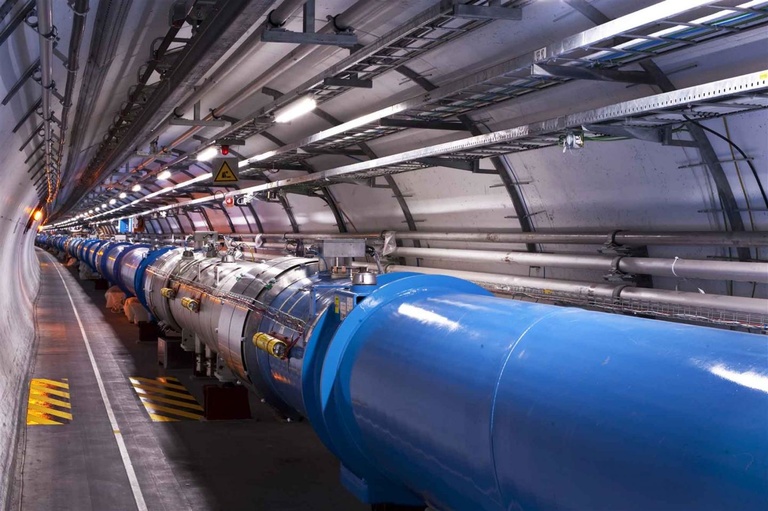An international group of scientists including particle physicists at the University of Iowa has announced the first evidence of rare interactions between the Higgs boson and a fundamental particle called a muon.

The discovery, announced this week at the 40th International Conference on High Energy Physics by the Compact Muon Solenoid (CMS) collaboration working at the Large Hadron Collider (LHC), the world's largest and highest-energy collider located near Geneva, Switzerland, adds to understanding about how basic constituents of the universe interact, and how these interactions may fit a theoretical framework called the Standard Model.
The Higgs boson is believed to give all other particles their mass, and was famously discovered by the ATLAS and CMS collaborations at the LHC in 2012. Only about one in 5,000 Higgs bosons are predicted to decay to muons. Adding to the challenge, for every predicted Higgs boson decay to muons at the LHC, there are about 1,000 muon pairs that mimic every single Higgs boson.
The Iowa group working at CMS and part of the research leading to the discovery includes Jane Nachtman and Yasar Onel, professors in the Department of Physics and Astronomy; and physics graduate students Mohammad Alhusseini, Viktor Khristenko, and Ohannes Koseyan.
Alhusseini, Nachtman, and Onel are listed as co-authors on a paper with the new results. Khristenko wrote his thesis on the topic.
Members of the Iowa group led the installation, commissioning, and data-taking operations efforts on CMS, and are now contributing to data analysis, including the latest results.
UI research scientists, graduate students, and engineers have been stationed at the European Organization for Nuclear Research (CERN), which is home to the LHC, in Geneva for several years and are a key part of the operations team. The facility requires a crew of highly-trained and dedicated individuals, as the complex, one-of-a-kind detectors are operated remotely in the LHC tunnel and must function at a high level for months without intervention.